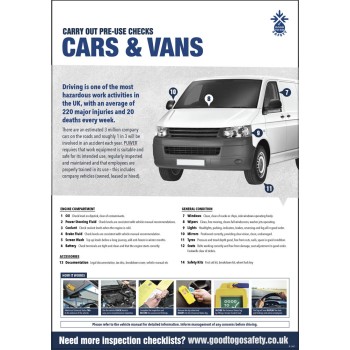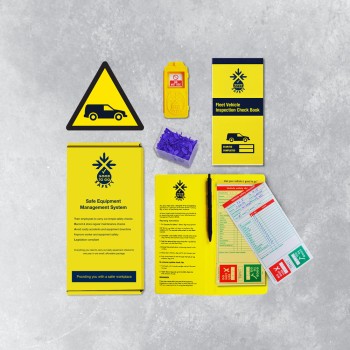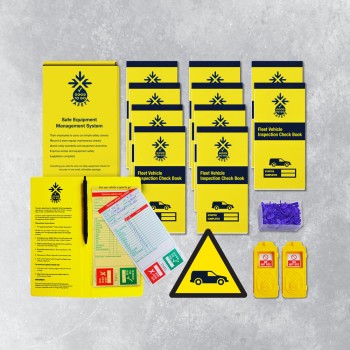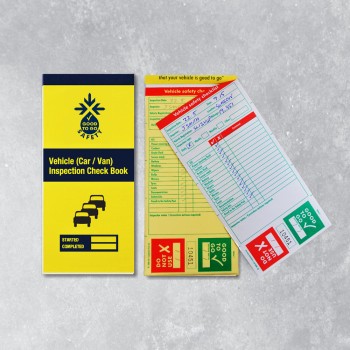The Government statistics released earlier today show a post-pandemic rise of road deaths and injuries in Britain. The full report can be viewed by clicking here.
The number of reported road casualties in 2021 continued to be impacted by the national restrictions following the coronavirus (COVID-19) pandemic, including a period of lockdown between January and March. Casualty numbers increased compared to 2020, which was also affected by the pandemic, but remained lower than the pre-pandemic levels. Overall, casualties have broadly followed trends in traffic in recent years.
These statistics show that in 2021 there were:
an estimated 1,558 reported road deaths, a 7% increase over 2020 but a decrease of 11% from pre-pandemic levels (2019)
an estimated 27,450 killed or seriously injured (KSI) casualties, 11% below the 2019 level
an estimated 128,209 casualties of all severities, 16% below the 2019 level
It is perhaps more appropriate to compare 2021 to 2019 due to the severity of COVID in 2020 and the affect it had on the number of road users during lock downs. But while the statistics suggest that road deaths have declined based on the 2019-to-2021 comparison, it is important to note that last year's traffic levels remained lower than normal due to lockdown periods between January and March as well as an increase in working and learning from home. Indeed, the DfT said there were 5.2 fatalities per billion vehicle miles in 2021, which is higher than the 4.9 deaths recorded per billion miles in 2019.
The vast majority of deaths on UK roads were people on foot (361), motorbikes (310) or on bicycles (111). The never-ending rise of living costs has forced many people to look at cost effective ways of travel and as living costs continue to rise, we will see an exponential burst of electric scooters, motorbikes and bicycles being used throughout the UK. E-scooter collisions have risen by almost 200% in the past year, totalling 1,434 injuries of varying severity. In reality E-scooters are a sustainable and cost-effective mode of transport, but the data clearly highlights a need for stricter regulation such as mandatory training similar to a cycling proficiency course, helmets and insurance for private ownership to keep people safe.
Worryingly, it also revealed that the UK is seeing a worrying resurgence in drivers and passengers failing to take legal safety precautions when inside a moving vehicle, with not wearing a seatbelt contributing to a staggering 30% of deaths in cars in 2021. This is the highest proportion on record of road deaths linked to not being correctly restrained. For deaths that occurred on roads at night, the proportion linked to not wearing a seatbelt were even higher at a 'dreadful' 47 per cent, analysis by the AA found.
When drilling down further into the data it was interesting to see the impact of vehicle defects as a contributing cause of a collision. The data in the table below includes only casualties in accidents where a police officer attended the scene and in which a contributory factor was reported.

Many of these contributory defects could have been easily identified and rectified prior to driving with the aid of simple pre-drive checks of the vehicle, which in turn could have prevented over 2,500 injuries or deaths. These simple car components are vitally important to the function and safety of a vehicle and yet they are so often overlooked or ignored.
There are an estimated 3 million company cars on the roads and roughly 1 in 3 will be involved in an accident each year. If a vehicle (owned, leased or hired) is used for work, it is covered under the regulations of PUWER. PUWER requires that all work equipment is suitable and safe for its intended use, regularly inspected and maintained in good repair. Something as simple as running out of screen wash can leave both driver and others around them in a life-threatening position.
As winter approaches us, now is the time to remember that snow and ice can make driving extremely dangerous so taking the necessary precautions can go a long way to improving safety on the roads. During wintery conditions, it is even more important to ensure you carry out pre-drive inspections on vehicles. Breaking down, being caught without screen wash or having illegal tread depth on your tyres, could prove life disastrous in wintery conditions (as the statistics back-up).
Asking employees to conduct pre-drive checks before using vehicles for work or commuting is a smart and responsible policy to enforce. With our easy-to-use walk-through checklist, it only takes a short time to ensure that a vehicle is safe to operate. Not only will it provide protection for the company and driver, but it also reinforces a strong safety awareness message at management level.
The number of reported road casualties in 2021 continued to be impacted by the national restrictions following the coronavirus (COVID-19) pandemic, including a period of lockdown between January and March. Casualty numbers increased compared to 2020, which was also affected by the pandemic, but remained lower than the pre-pandemic levels. Overall, casualties have broadly followed trends in traffic in recent years.
These statistics show that in 2021 there were:
an estimated 1,558 reported road deaths, a 7% increase over 2020 but a decrease of 11% from pre-pandemic levels (2019)
an estimated 27,450 killed or seriously injured (KSI) casualties, 11% below the 2019 level
an estimated 128,209 casualties of all severities, 16% below the 2019 level
It is perhaps more appropriate to compare 2021 to 2019 due to the severity of COVID in 2020 and the affect it had on the number of road users during lock downs. But while the statistics suggest that road deaths have declined based on the 2019-to-2021 comparison, it is important to note that last year's traffic levels remained lower than normal due to lockdown periods between January and March as well as an increase in working and learning from home. Indeed, the DfT said there were 5.2 fatalities per billion vehicle miles in 2021, which is higher than the 4.9 deaths recorded per billion miles in 2019.
The vast majority of deaths on UK roads were people on foot (361), motorbikes (310) or on bicycles (111). The never-ending rise of living costs has forced many people to look at cost effective ways of travel and as living costs continue to rise, we will see an exponential burst of electric scooters, motorbikes and bicycles being used throughout the UK. E-scooter collisions have risen by almost 200% in the past year, totalling 1,434 injuries of varying severity. In reality E-scooters are a sustainable and cost-effective mode of transport, but the data clearly highlights a need for stricter regulation such as mandatory training similar to a cycling proficiency course, helmets and insurance for private ownership to keep people safe.
Worryingly, it also revealed that the UK is seeing a worrying resurgence in drivers and passengers failing to take legal safety precautions when inside a moving vehicle, with not wearing a seatbelt contributing to a staggering 30% of deaths in cars in 2021. This is the highest proportion on record of road deaths linked to not being correctly restrained. For deaths that occurred on roads at night, the proportion linked to not wearing a seatbelt were even higher at a 'dreadful' 47 per cent, analysis by the AA found.
When drilling down further into the data it was interesting to see the impact of vehicle defects as a contributing cause of a collision. The data in the table below includes only casualties in accidents where a police officer attended the scene and in which a contributory factor was reported.

Many of these contributory defects could have been easily identified and rectified prior to driving with the aid of simple pre-drive checks of the vehicle, which in turn could have prevented over 2,500 injuries or deaths. These simple car components are vitally important to the function and safety of a vehicle and yet they are so often overlooked or ignored.
There are an estimated 3 million company cars on the roads and roughly 1 in 3 will be involved in an accident each year. If a vehicle (owned, leased or hired) is used for work, it is covered under the regulations of PUWER. PUWER requires that all work equipment is suitable and safe for its intended use, regularly inspected and maintained in good repair. Something as simple as running out of screen wash can leave both driver and others around them in a life-threatening position.
As winter approaches us, now is the time to remember that snow and ice can make driving extremely dangerous so taking the necessary precautions can go a long way to improving safety on the roads. During wintery conditions, it is even more important to ensure you carry out pre-drive inspections on vehicles. Breaking down, being caught without screen wash or having illegal tread depth on your tyres, could prove life disastrous in wintery conditions (as the statistics back-up).
Asking employees to conduct pre-drive checks before using vehicles for work or commuting is a smart and responsible policy to enforce. With our easy-to-use walk-through checklist, it only takes a short time to ensure that a vehicle is safe to operate. Not only will it provide protection for the company and driver, but it also reinforces a strong safety awareness message at management level.






